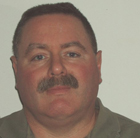
Imagine sitting down to breakfast and then noticing that one of your fellow residents is not sitting at the breakfast table at his usual customary spot. That is when fellow residents would first find out that one of their comrades had passed away. Earlier in the evening the resident had expired and was shuttled out the freight loading dock into a waiting hearse. This was how the death process was dealt with before we instituted the “final salute” protocol.
The New Hampshire Veterans Home felt that the resident was welcomed through the front door as a new admission and he should go out that same front door on his final departure. We then worked on coming up with a process that is now known as the “final salute.”
We put together a process in which we place an American flag over the gurney of a deceased resident. We then escort the body and lead the deceased resident to our common area by the dining room. The residents are called to attention by the resident council president. We created a short final prayer that reads:
“(Resident’s name) is now leaving the veterans home on his/her heavenly departure. May (resident’s name) now rest in peace. We thank you for your honorable service to your country in its time of need.”
We then salute the deceased resident and the resident counsel president chants “two.” A uniformed security officer escorts the body down the elevator to the main entrance of the facility and out the front door—a show of dignity and respect. The American flag is then removed from the deceased resident prior to being loaded into the funeral director’s vehicle and the flag is then ceremoniously folded and prepared for further service.
We announce over the public address system that the resident has passed and we ask for a moment of silence as we ring a brass bell three times in somber remembrance of the resident. This “final salute” protocol has been extremely well received by the residents as they now have proper closure in saying good-bye to their comrade in arms. Many of our residents are not physically capable of actual attendance in the service. This is a small example of how the safety and security department goes the extra mile in the service aspect in understanding our customers’ needs. The final salute was recognized in the Quality of Life award in New Hampshire and was given a standing ovation.
The first time we did this, we were amazed at the military bearing that a 90-year-old wheelchair-bound war veteran was able to muster. Many stood up from their wheelchairs and others had to use two hands to snap a salute due to a stroke. It greatly moved the staff as well as the residents and visitors. All we could think of is that we should have been doing this sooner.
We slowly integrated having the escorting security officer wear white gloves. Many of our officers keep their shoes and boots at a high level of readiness as General George S. Patton was well know for saying, “You are always on parade.”
Many of our residents pass away at a hospital. We designed a plan for that as well. If the resident passes away from the facility we continue to have the procession walk. Instead of escorting the deceased resident’s gurney, the security officer carries a crisp, folded American flag. The security officer walks the length of the hall and stops at the exact location as if the body was at rest. The same exact ceremony is conducted with the security officer holding the flag in symbolic remembrance of the resident.
My hope is that other long-term care facilities can introduce an act of remembrance for their residents. The “final salute” process does not have to be as elaborate as ours and can build over time. I would suggest involving the residents and the resident council as much as possible. A long-term care facility is the last “home” that a person will have and their passing should be something more than a ride through a loading dock.
William R, Losefsky, CHPA,CMI,CPM, CIRM, is director of safety, security and emergency management at the New Hampshire State Veterans Home.




